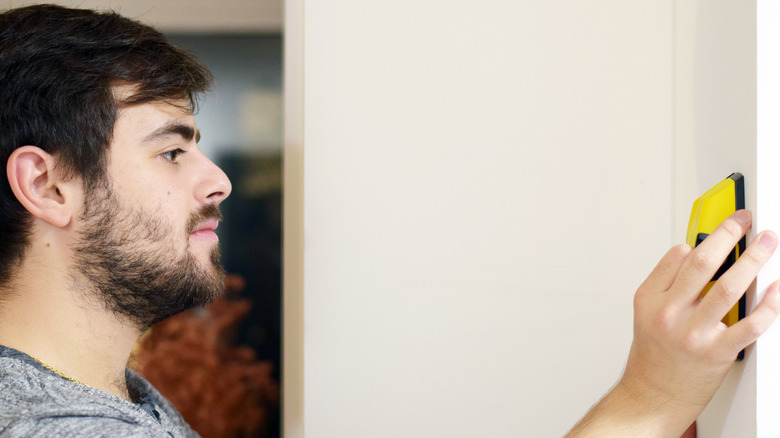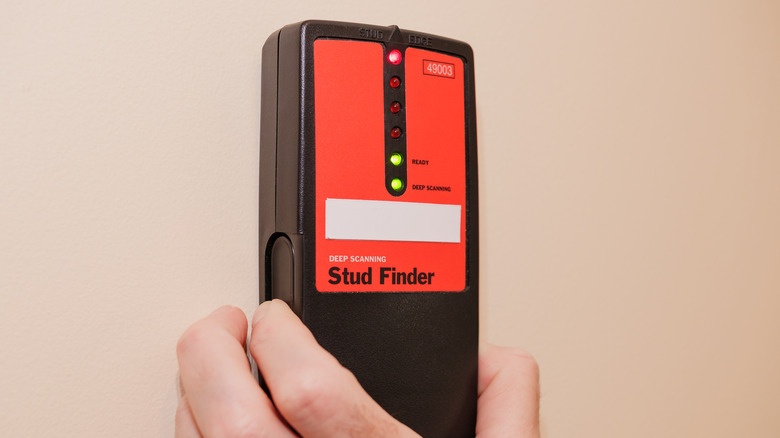How To Find Wall Studs Without Making Holes
Hanging picture frames, making DIY home renovations, and more changes require a basic understanding of studs and how to find them. The studs are the wooden beams that sit behind your drywall sheeting, and these planks give structure and stability to the walls themselves and anything that's hanging from them, Allstate explains.
Stud finders are some of the easiest tools to use, and they require no real background knowledge or training to navigate successfully. Those tools are great assets, and they can help you locate these crucial and hidden pieces of the home without drilling into the drywall and hoping for the best, as per The Handyman's Daughter. Of course, there are other ways to find studs in the wall, and the knock method, using a flashlight to spot the heads of fasteners, or drilling into the wall (in a pinch) will all work. But without a doubt, stud finders are the best tools for this job because they work quickly and save you from damaging the wall in the search.
Studs are essential when hanging objects
Unless you are putting up very light decorations, it's essential to hang frames and other objects on your walls with the help of the studs. Popular Mechanics notes that you should never simply drive a nail into the wall and call it a day, though it might seem like a reasonable approach for lighter additions.
Picture frames are a common sight on the walls of a home, and adding these features to your property typically requires a two-step process. First, finding the stud will give you greater confidence in the longevity of your installation. It is possible to add smaller frames to the wall without nailing them into studs, but for this, you'll need specialized anchoring nails that can compensate for the lack of firm, wooden backing behind the drywall (via AS Hanging).
Finding the studs will allow you to select the appropriate fastening tool accurately. Once you've chosen the location of your frame (or other addition), you'll want to use a level to ensure that the object hangs straight in its new place. A picture frame, shelf, or other addition will take away from the visual appeal if it's installed at an angle, even a slight one.
Using a stud finder makes the job a breeze
The Handyman's Daughter notes that electronic stud finders and magnetic models are both great for identifying where the studs are in your walls. Electric finders work by measuring wall density. Because drywall sheets are fastened directly to these studs, the density will naturally increase as you run the finder along the wall in search of these posts. Magnetic finders work by detecting the metal nails or screws that were used to attach the studs to one another and the drywall to the timber frame itself.
With either model, you'll simply press the device against the wall and slowly move it along horizontally until it responds. Once you've seen the device pop on a stud, you know you've found the first one in your hunt. One benefit of a magnetic stud finder is the natural fastening power that magnets bring to bear. These devices will stick to the wall when they are placed against a stud, meaning you can leave the finder on the wall to mark the position or work on the initial stage of lining up your installation.
According to Westlake ACE Hardware, another essential feature to keep in mind is that studs are typically positioned either 16 or 24 inches apart from one another (from center to center). This means that you can be relatively confident about where the next stud will be once you've located your first.


